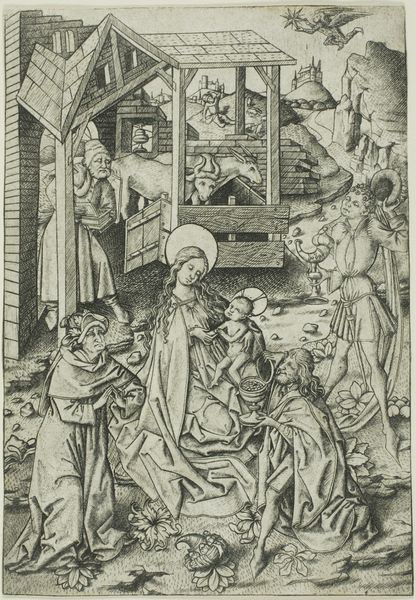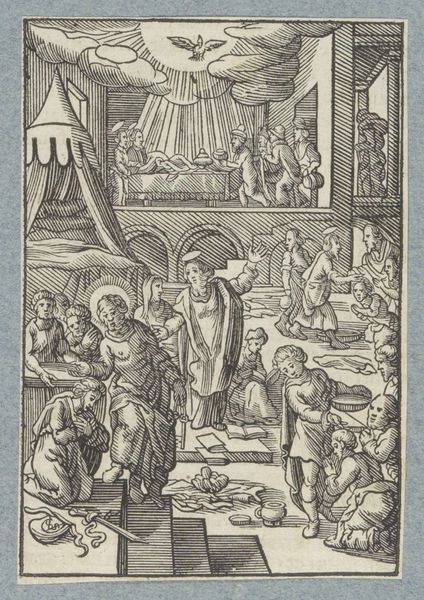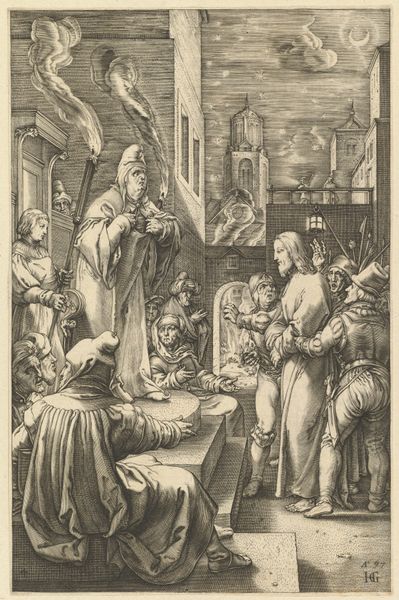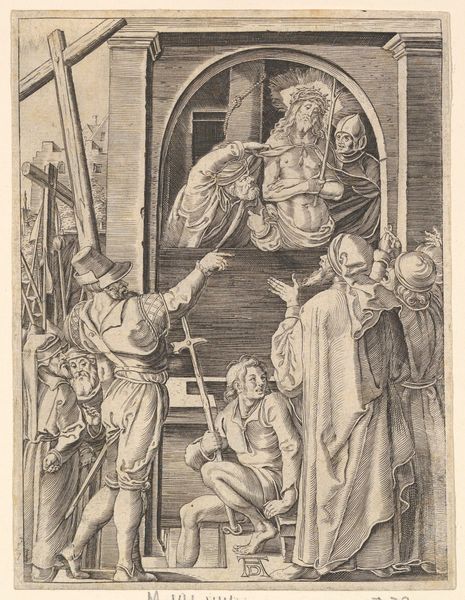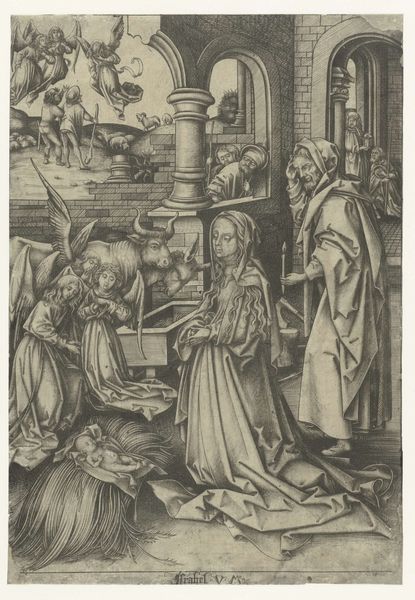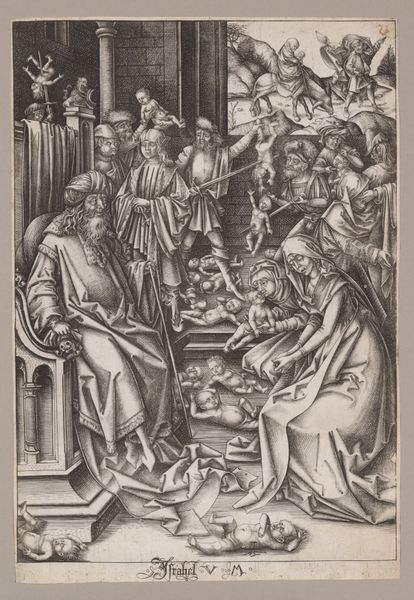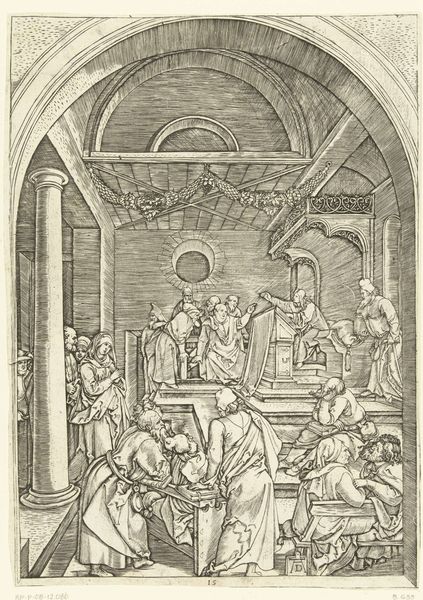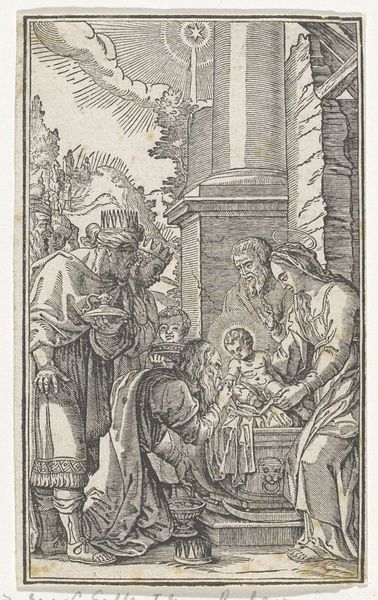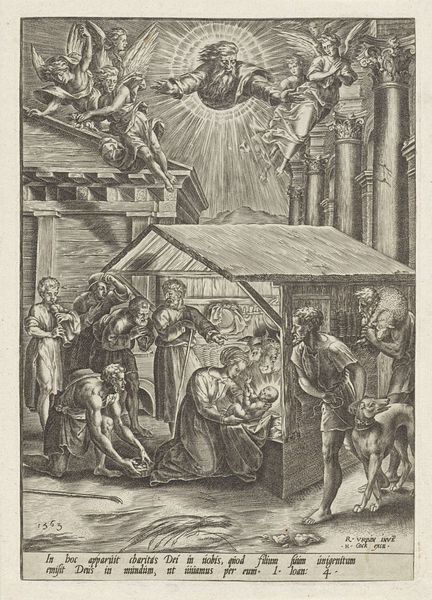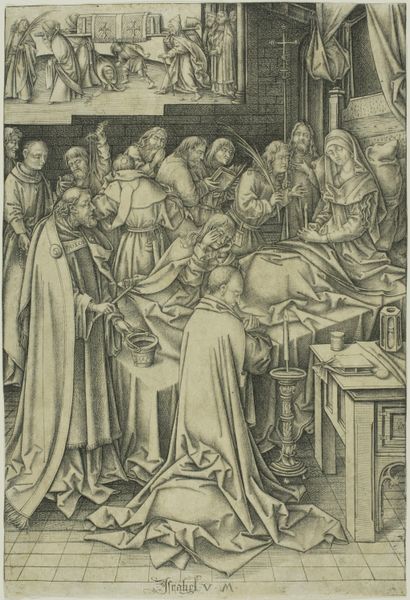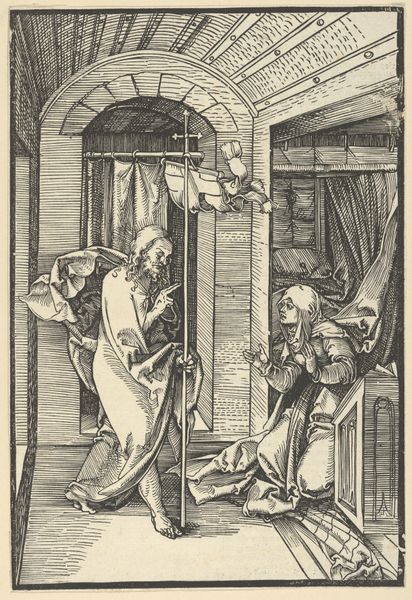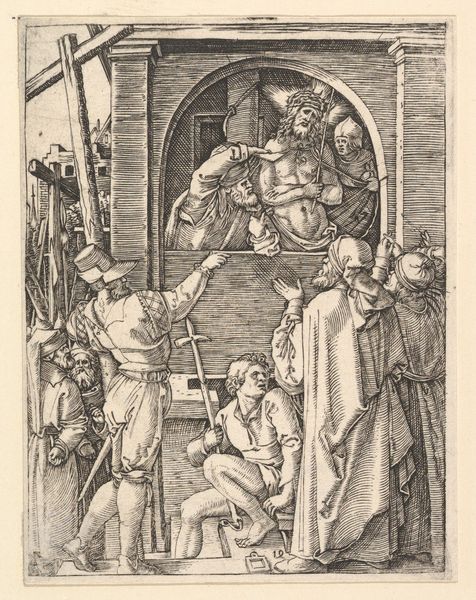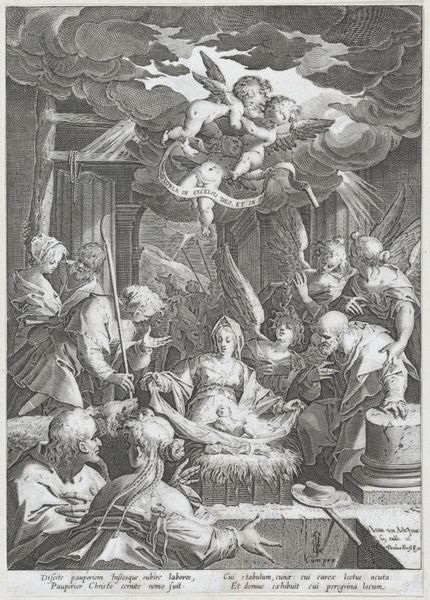
print, engraving
#
medieval
#
pen drawing
# print
#
figuration
#
ink line art
#
line
#
history-painting
#
northern-renaissance
#
engraving
Dimensions: height 206 mm, width 175 mm
Copyright: Rijks Museum: Open Domain
Editor: We're looking at Hans Springinklee's "The Birth of Christ," made between 1519 and 1530. It's a print, an engraving to be exact, and it has an amazing level of detail. The composition seems to be divided between an earthly, broken-down world and a sacred space. What strikes you about this piece? Curator: The deliberate juxtaposition of decay and divinity is quite striking, isn't it? Consider the period. Springinklee was working during a time of massive religious and social upheaval with the Reformation gaining momentum. The crumbling architecture, set against the miraculous birth, hints at the waning power of the established Church. How might this imagery reflect anxieties surrounding shifting power structures of the time? Editor: That's interesting. I hadn't considered the Reformation context. So, the broken structures could be read as symbolic of institutional breakdown? Curator: Precisely. And look at Mary – her humility and piety are foregrounded in a chaotic environment. The clustering of angels suggests a moment of divine intervention in this declining world. Where do we see similar imagery reflected in contemporary movements around the role of the divine and/or religion? Editor: So the artwork isn't just a religious scene, but also a commentary on the societal conditions of the time and that interplay of earthly and divine influence. Thanks for your help looking at the world in that light. Curator: Art serves as a mirror to society, reflecting and refracting our fears, hopes, and struggles. Seeing these reflections helps us connect with history on a deeper level, and more fully understand how art functions today.
Comments
No comments
Be the first to comment and join the conversation on the ultimate creative platform.
